Friday, 10:00am
8 April 2022
The Stonehenge we deserve
exhibition design
British Museum
Information design
New media
Visual culture
Events and exhibitions
The British Museum’s ‘World of Stonehenge’ summons up the presence of this awe-inspiring monument. By Janet South
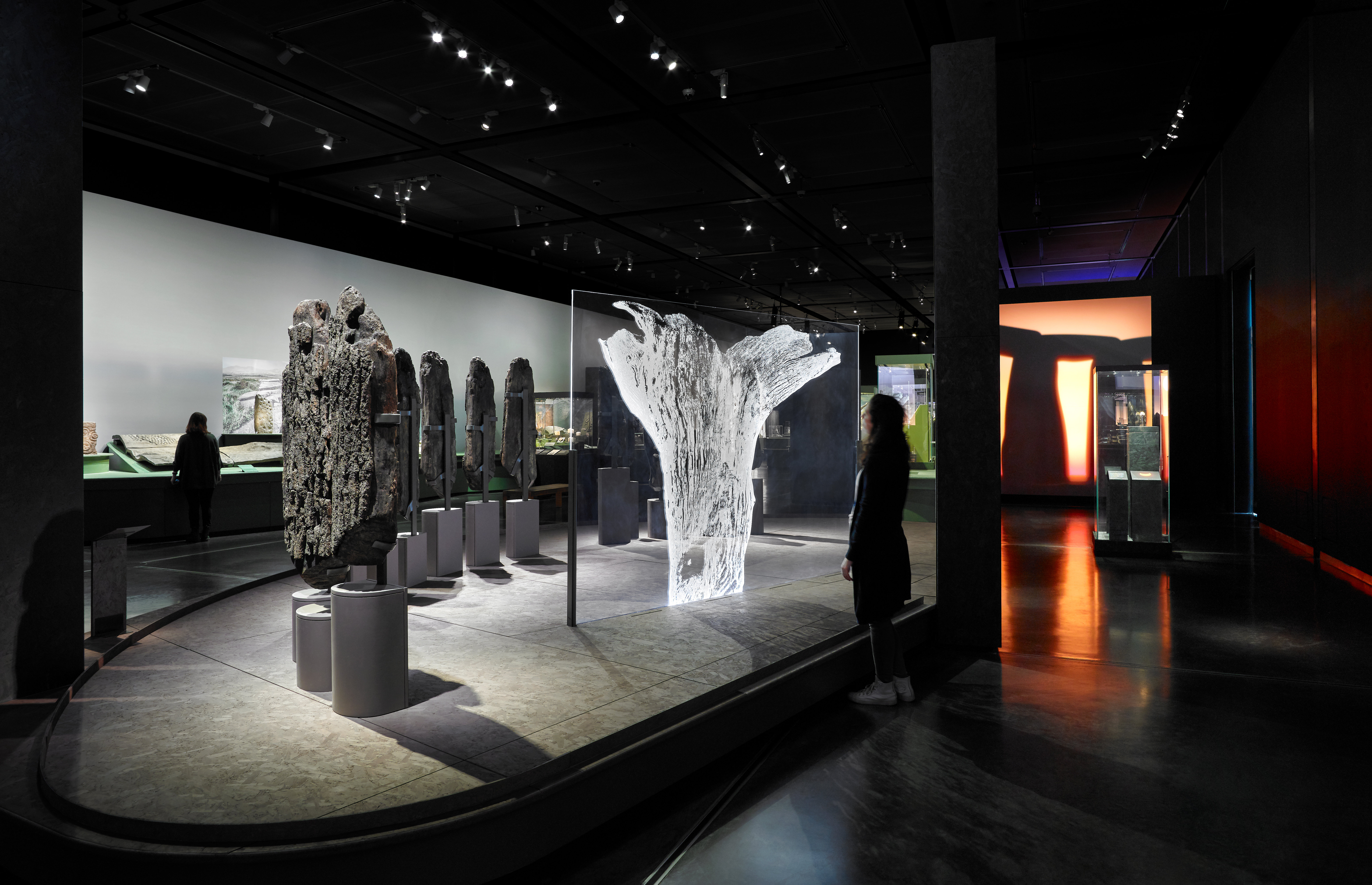
How can you put Stonehenge in a museum? The awe-inspiring sight of these monumental, 4500-year-old standing stones has always been welcome element of journeys to the West Country. It has always marked a half-way point, giving the family something to talk about for the next twenty minutes. So I was interested to see how an exhibition could recreate this awesome monument without re-creating it in fibreglass, Spinal Tap style.
Aerial view of Stonehenge © English Heritage.
Top. Seahenge Oak, Holme-next-the-Sea, Norfolk, 2049 BC showing life-sized illustration of central oak stump (the original was too fragile to be moved). Photo © RAA / Andrew Lee.
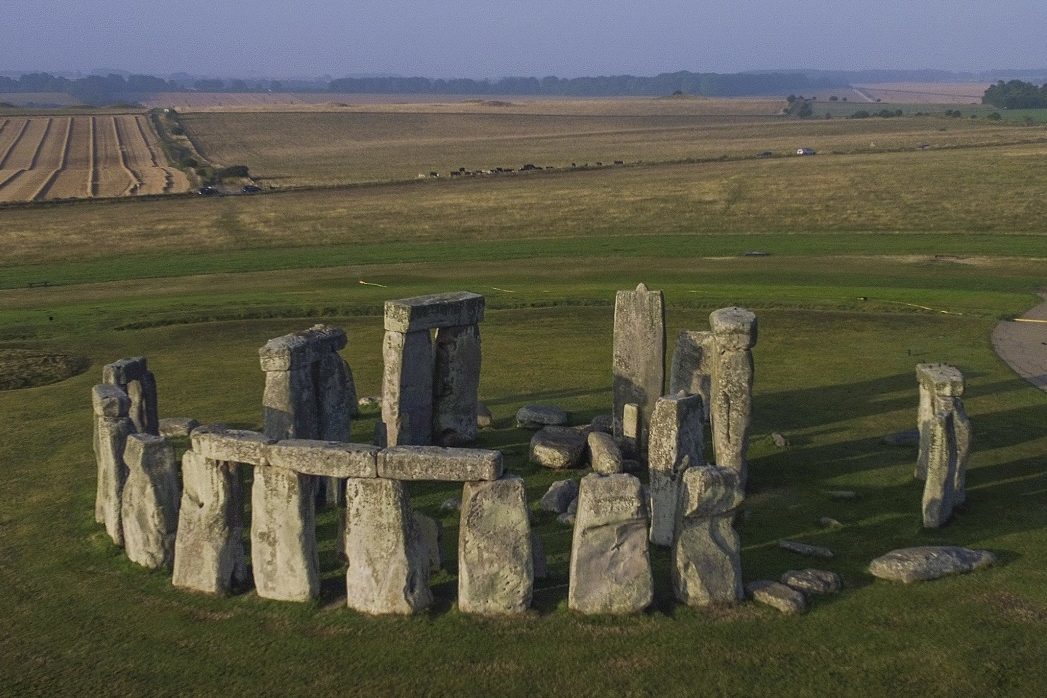
I need not have worried because exhibition designers Ralph Appelbaum Associates (RAA) has taken the emotional and spiritual connections we have had with Stonehenge for thousands of years and worked with it to manoeuvre the shape, light and sound that navigates our journey through the space. RAA has chosen to build from OSB (oriented strand board), a relatively simple and cheap material made from wood shavings, stained a dark charcoal or muted green to reflect the colours of stone and grassland. The effect is soft and natural and does not upstage the artefacts.
The British Museum expands the story of the Stonehenge era and contextualises it with other European landmarks and artefacts to narrate a journey that reveals cyclical connections between people, land and sky.
Installation view showing axe heads that represent generations of human tool users from Europe between 4500-1500 BC. Photo © RAA / Andrew Lee.
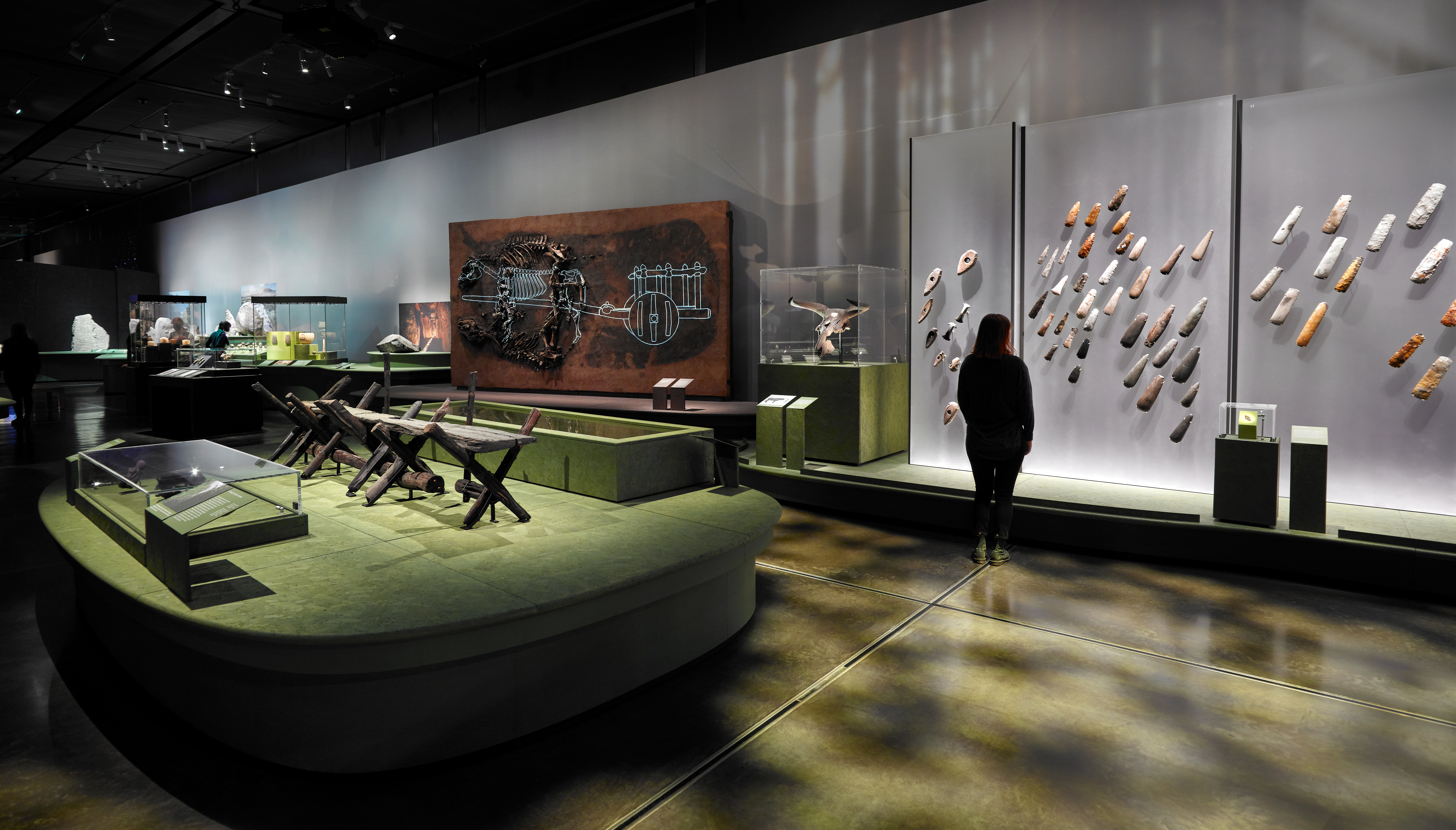
The exhibition opens into a linear space softened by the organic curves of the display stands which reference an ancestral journey across the plains to Stonehenge. Juxtaposed against a wall of axe-heads, bones, tools and Antler headdresses, we see a tiny, delicate Elm leaf which has somehow survived intact for 6000 years.
Elm leaf, Windy Harbour, Lancashire, about 4000 BC, courtesy Oxford Archaeology Ltd. Photo by Janet South.
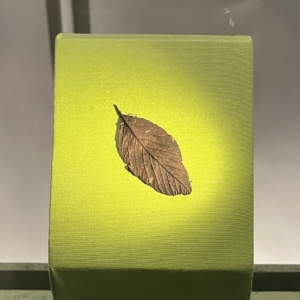
Seahenge, a 4000-year-old timber circle miraculously preserved in peat and sand in Norfolk, is partially represented by a half-circle of oak trunks that adds a sense of scale. This is accompanied by an atmospheric soundscape by Rob St John and Rose Ferraby.
Seahenge display seen from the reverse angle. © RAA / Andrew Lee.
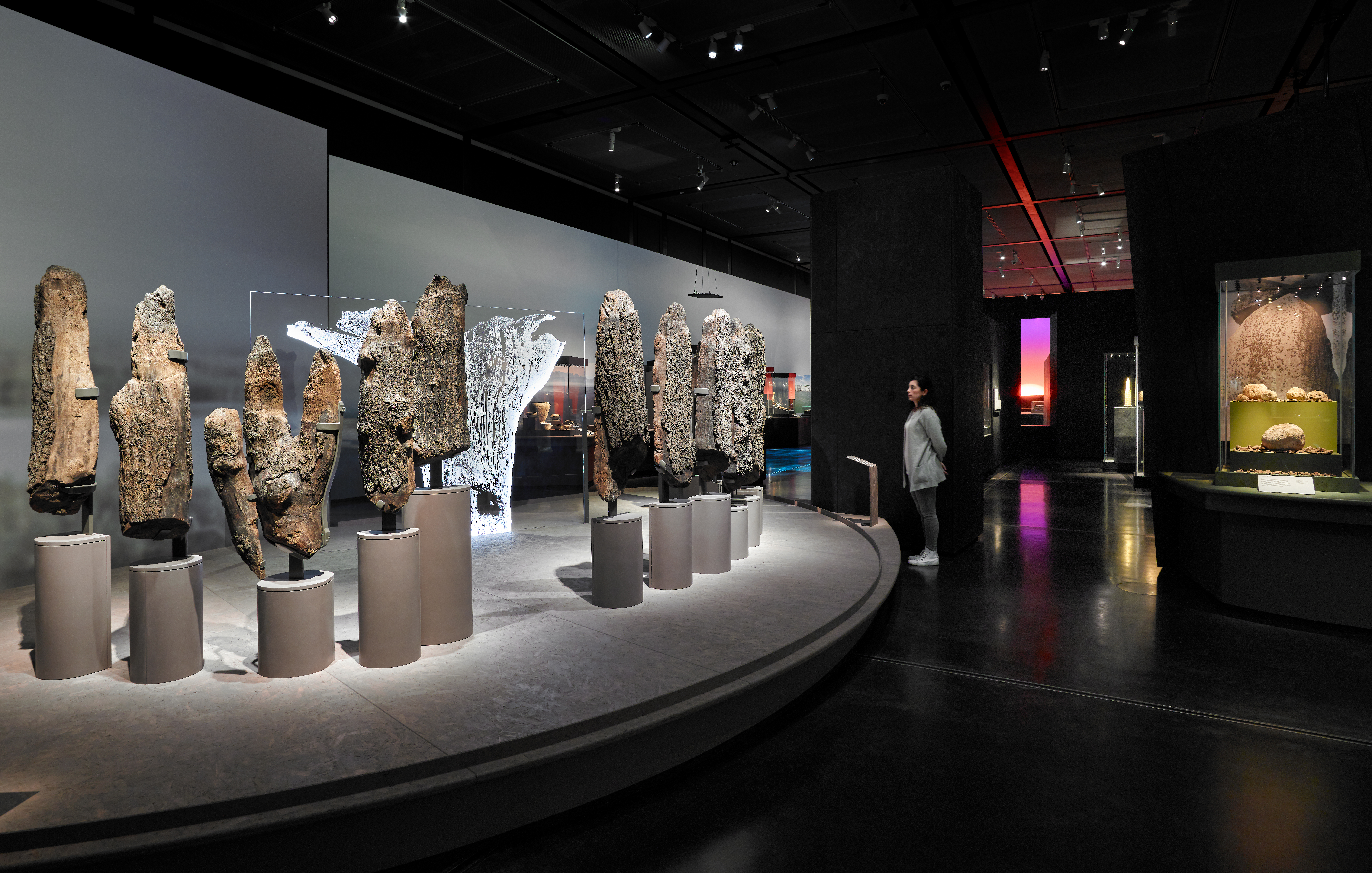
The space condenses into a dark area illuminated by a wall of stars and populated with golden treasures. The stand-out item – seen on everything in the gift shop – is The Nebra Sky Disc. This is essentially a map of the sky, a gold and bronze disc that calibrates the difference between the lunar and solar years (so a leap year can be calculated).
The gold and bronze Nebra Sky Disc, circa 1600 BC, found in Nebra, Saxony-Anhalt, Germany. Photo by Janet South.
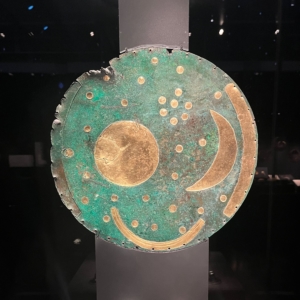
The space opens out again to a full view of the huge, feature-wall cyclorama that pulls the exhibition elements together. Visitors get a ‘dawn to dusk‘ experience as this slowly fades from cool morning light to a rich warm sunset. Here we see precious grave goods from some of the hundreds of burial mounds surrounding Stonehenge.
Dawn to dusk installation at ‘The World of Stonehenge’, showing the ‘Setting sun’ lighting display. Image © RAA / Andrew Lee.
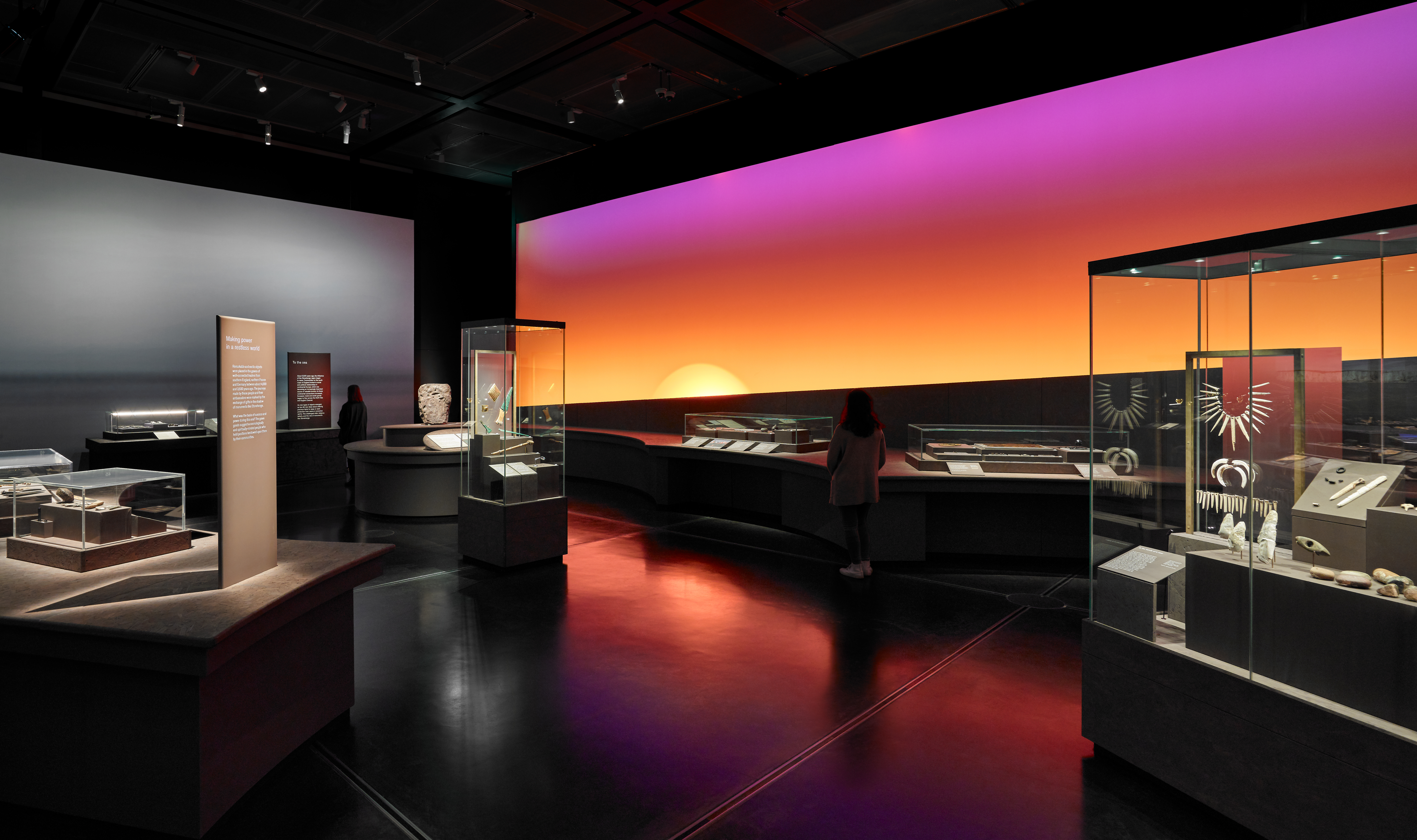
Against the ‘setting sun’, a final vitrine shows a beautiful 3000-year-old gold sun pendant found by detectorists in Shropshire in 2018. The exhibition ends with a final quote from pioneering archeologist, writer and activist Jacquetta Hawkes: ‘Every age gets the Stonehenge it deserves – and desires.’
caption Janet South
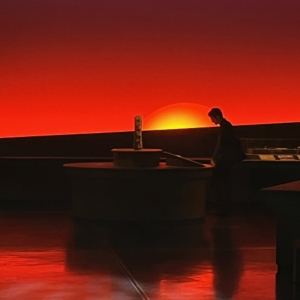
Janet South, Eye business manager, London
‘The World of Stonehenge’ is at the British Museum, The Sainsbury Exhibitions Gallery, Great Russell Street, London WC1B 3DG until 17 July. Tickets £18-25.
Stonehenge at sunset. © English Heritage.
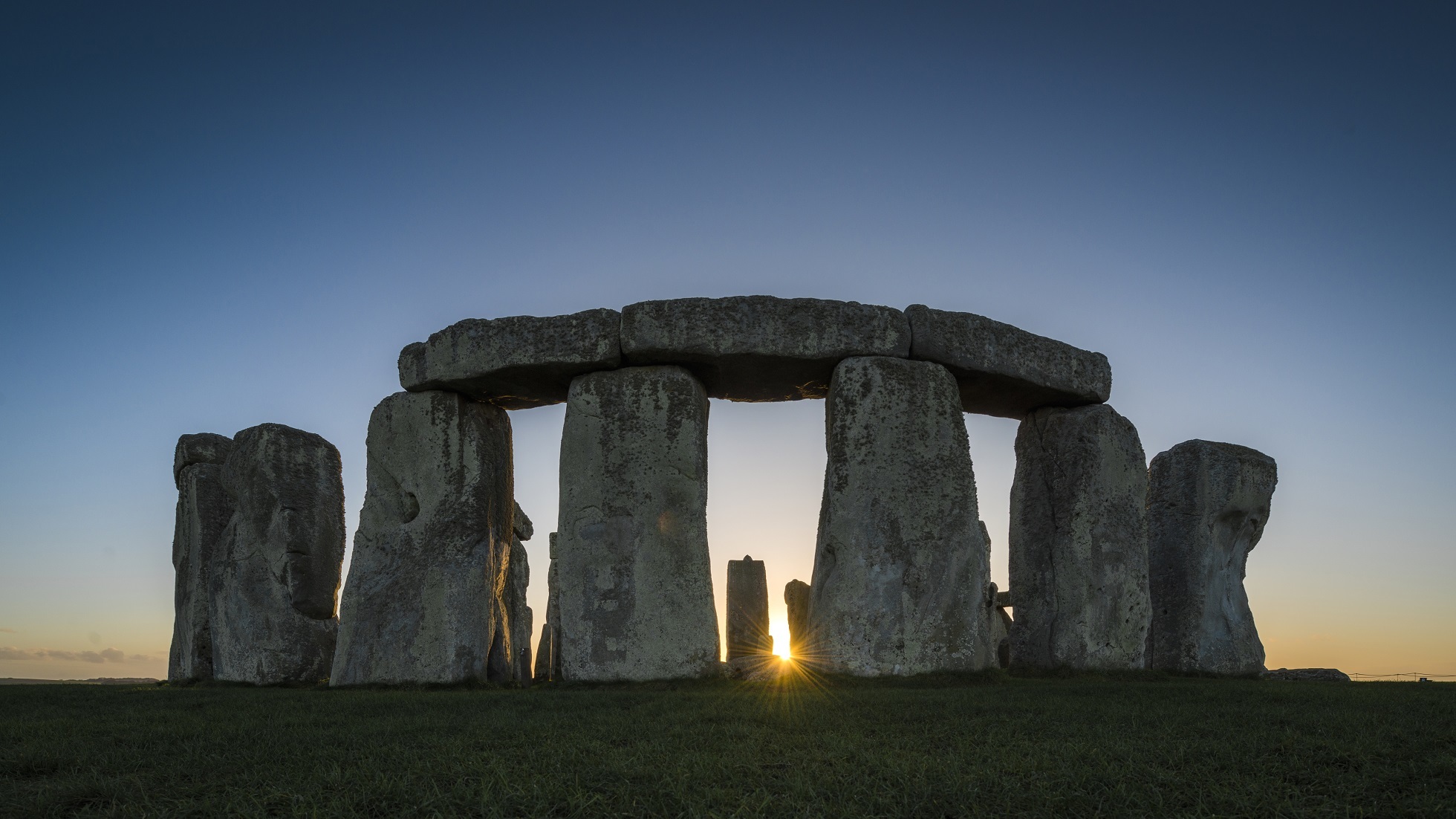
Lead curator: Neil Wilkin, curator of Early Europe at the British Museum.
Exhibition design: Ralph Appelbaum Associates.
Thanks to Neil and RAA’s Phillip Tefft for the tour of the exhibition.
Eye is the world’s most beautiful and collectable graphic design journal, published for professional designers, students and anyone interested in critical, informed writing about graphic design and visual culture. It is available from all good design bookshops and online at the Eye shop, where you can buy subscriptions and single issues.
